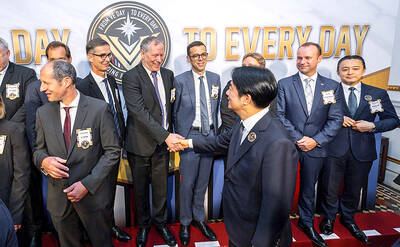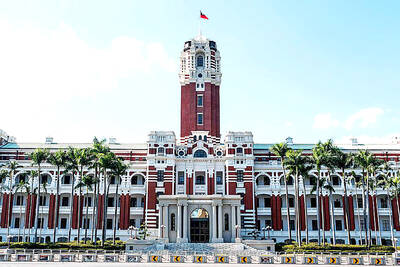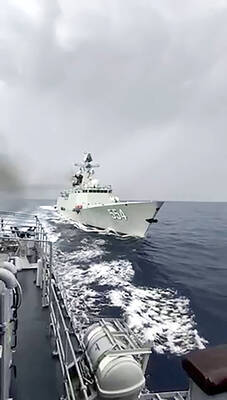Asian farmers, among the poorest in the world, understand their European colleagues' hunger for subsidies -- but not at the expense of fair trade for their own produce.
And they are determined to make their case ahead of WTO talks on the sensitive issue next month.
Three lobby groups representing more than 260 million farmers in the EU and Asia came together last week for their first organized exchange of views in the run-up to next month's WTO meeting.
Delegates to the two-day meeting in Brussels, which ended Friday, agreed that farming was not just a trade issue but was vital to the lifeblood of any society.
But lavish subsidies under the EU's Common Agricultural Policy unfairly skew world trade in food, according to Raul Montemayor, the Philippine president of the Asian Farmers' Group for Cooperation (AFGC).
The Brussels meeting would help tackle Asian prejudices that European farmers are the "bad boys" of world trade, as the subsidies did play a role in safeguarding food security and livelihoods, he told reporters after the talks.
"But they should do it in a way that will not harm farmers in countries like in Asia, where the farmers are usually small-scale [and] have very little support from their governments," Montemayor said.
Subsidies in the rich world drove down prices of produce in the developing world and sent many poorer farmers into bankruptcy, he said, calling for a "win-win" solution for all sides.
"We are trying to look for a formula where farmers in Europe can continue with the kind of system that they have, which may include such subsidies, but in such a way that this does not result in harm to farmers in Asia, for example."
The question is daunting: how to reconcile the needs of a grandmother in Vietnam bent double sowing rice seeds with those of an EU farmer employing state-of-the-art machinery on vast fields of grain.
But, the lobby groups argued, farmers in both regions share a desire to protect their food supplies and rural ways of life.
Isami Miyata of Japan's Central Union of Agricultural Cooperatives stressed the WTO should respect the "multifunctionality" of farming. Agriculture was too special to be treated like cars or financial services in the liberalisation debate.
Many Japanese rice farmers, long protected by a myriad of regulations, were now feeling the pinch from foreign imports, Miyata complained.
Observers, however, have pointed to a glut in supply and a shift in the Japanese diet towards Western staples like bread and potatoes as being equally to blame for the plight of Japan's rice farmers.
And, free-trade advocates argue, liberalization can transform the fortunes of a desperately poor country. Vietnam has gone from food shortages to being the world's second largest rice exporter in little more than a decade.
Japan is scheduled to host an informal WTO meeting on Feb. 10 and Feb. 11 in Tokyo, as the Geneva-based WTO battles to meet a March 31 deadline for an accord on a framework to free up farm trade -- the most sensitive liberalization issue of all.
Several EU and Asian governments, notably France and Japan, want to make agriculture a special case in the WTO negotiations which they say should be exempt from full liberalisation.
But critics argue that the most effective weapon against grinding poverty in the developing world is a level playing field in agriculture, which in Europe, the US and Japan remains heavily protected. The EU last month proposed to transform poor nations' access to its farming markets in the WTO talks, but was accused by British aid charity Oxfam of producing a "vacuous public relations document."
The Brussels meeting was hosted by two EU farming lobbies, the Committee of Agricultural Organizations and the General Committee for Agricultural Cooperation.
The AFGC comprises farming and co-operative organisations from India, Indonesia, Japan, Malaysia, the Philippines, South Korea, Sri Lanka, Thailand and Vietnam.

DEFENDING DEMOCRACY: Taiwan shares the same values as those that fought in WWII, and nations must unite to halt the expansion of a new authoritarian bloc, Lai said The government yesterday held a commemoration ceremony for Victory in Europe (V-E) Day, joining the rest of the world for the first time to mark the anniversary of the end of World War II in Europe. Taiwan honoring V-E Day signifies “our growing connections with the international community,” President William Lai (賴清德) said at a reception in Taipei on the 80th anniversary of V-E Day. One of the major lessons of World War II is that “authoritarianism and aggression lead only to slaughter, tragedy and greater inequality,” Lai said. Even more importantly, the war also taught people that “those who cherish peace cannot

STEADFAST FRIEND: The bills encourage increased Taiwan-US engagement and address China’s distortion of UN Resolution 2758 to isolate Taiwan internationally The Presidential Office yesterday thanked the US House of Representatives for unanimously passing two Taiwan-related bills highlighting its solid support for Taiwan’s democracy and global participation, and for deepening bilateral relations. One of the bills, the Taiwan Assurance Implementation Act, requires the US Department of State to periodically review its guidelines for engagement with Taiwan, and report to the US Congress on the guidelines and plans to lift self-imposed limitations on US-Taiwan engagement. The other bill is the Taiwan International Solidarity Act, which clarifies that UN Resolution 2758 does not address the issue of the representation of Taiwan or its people in

Taiwanese Olympic badminton men’s doubles gold medalist Wang Chi-lin (王齊麟) and his new partner, Chiu Hsiang-chieh (邱相榤), clinched the men’s doubles title at the Yonex Taipei Open yesterday, becoming the second Taiwanese team to win a title in the tournament. Ranked 19th in the world, the Taiwanese duo defeated Kang Min-hyuk and Ki Dong-ju of South Korea 21-18, 21-15 in a pulsating 43-minute final to clinch their first doubles title after teaming up last year. Wang, the men’s doubles gold medalist at the 2020 and 2024 Olympics, partnered with Chiu in August last year after the retirement of his teammate Lee Yang

The Philippines yesterday criticized a “high-risk” maneuver by a Chinese vessel near the disputed Scarborough Shoal (Huangyan Island, 黃岩島) in a rare incident involving warships from the two navies. The Scarborough Shoal — a triangular chain of reefs and rocks in the contested South China Sea — has been a flash point between the countries since China seized it from the Philippines in 2012. Taiwan also claims the shoal. Monday’s encounter took place approximately 11.8 nautical miles (22km) southeast” of the Scarborough Shoal, the Philippine military said, during ongoing US-Philippine military exercises that Beijing has criticized as destabilizing. “The Chinese frigate BN 554 was